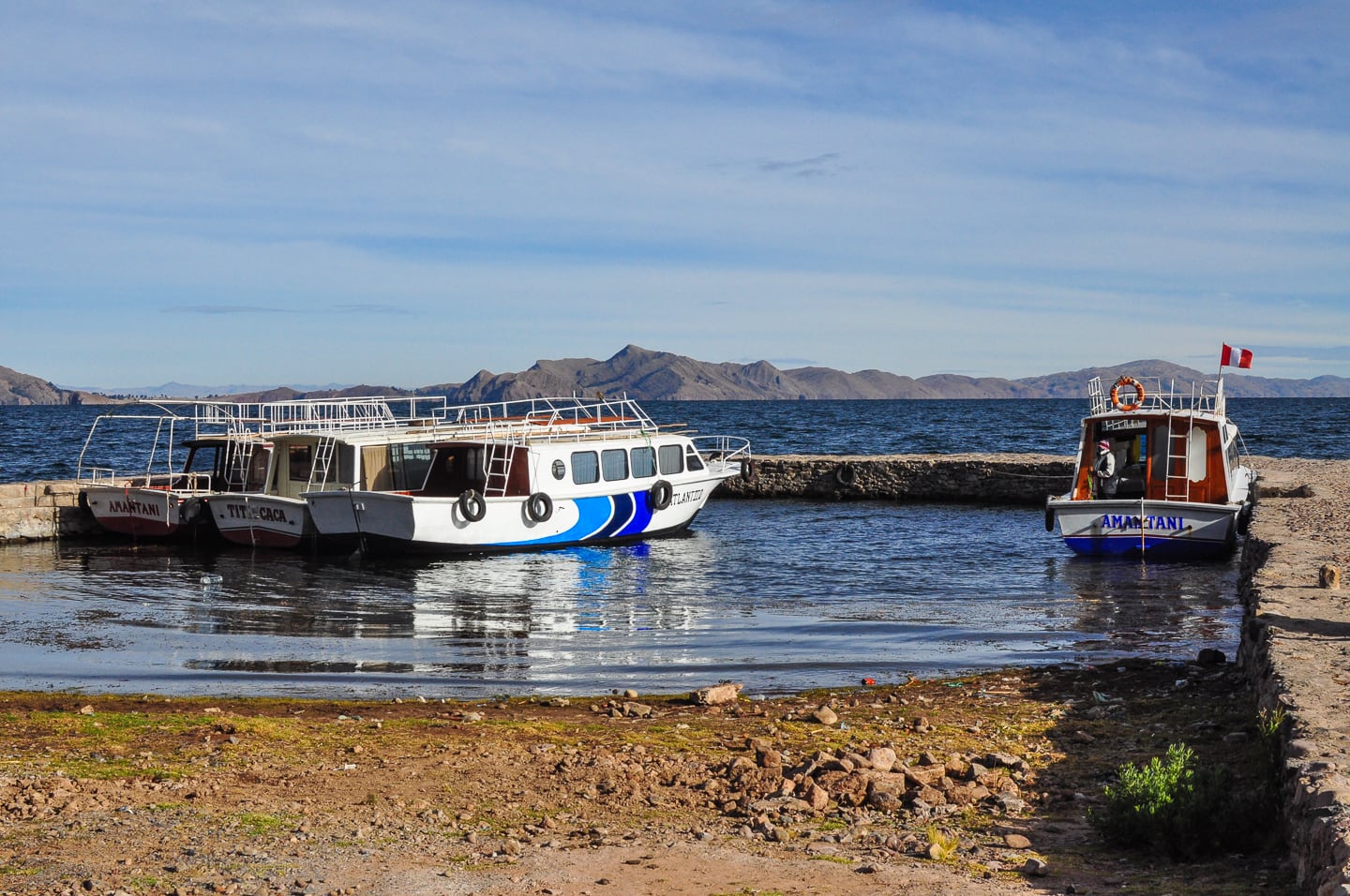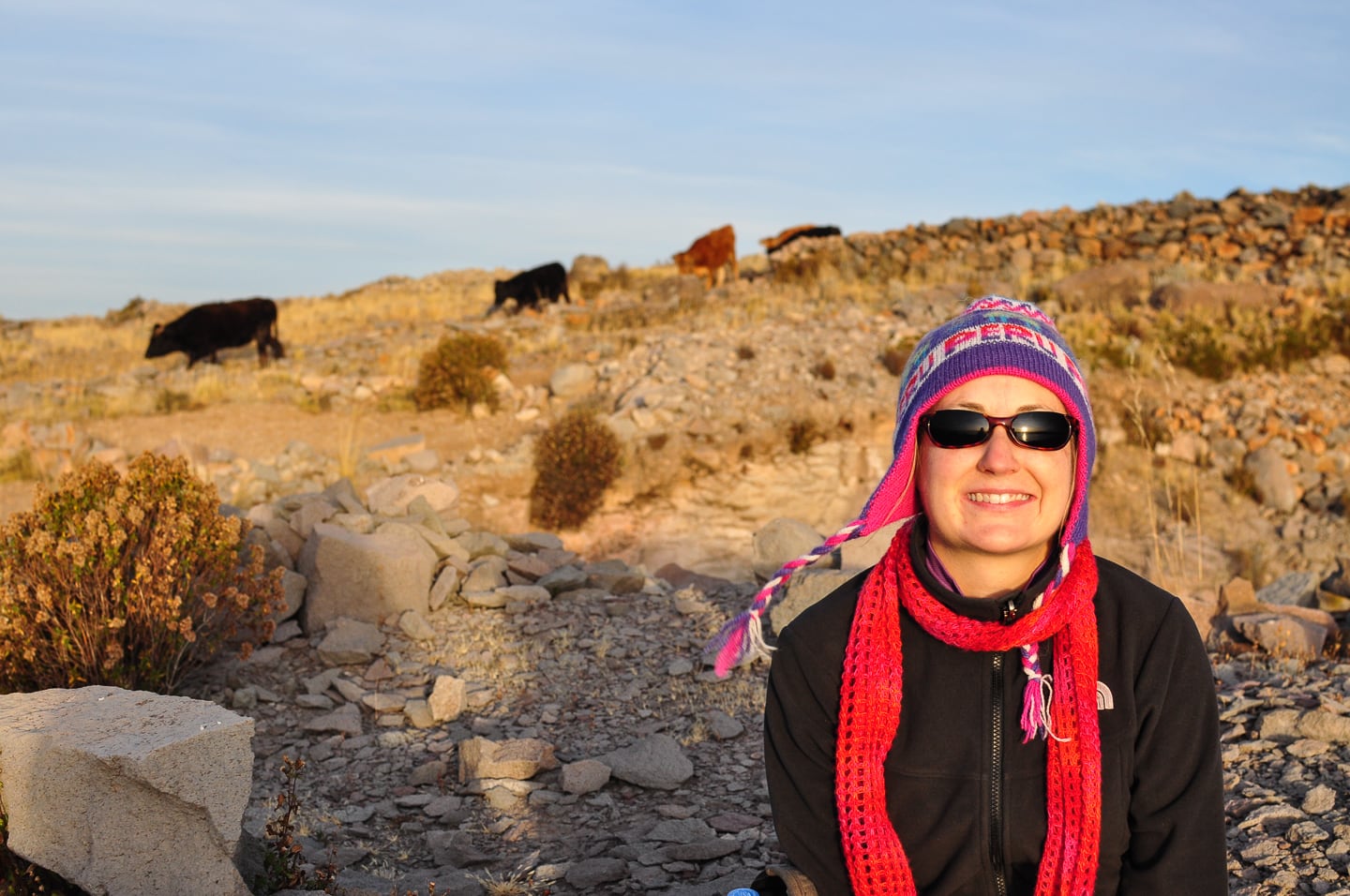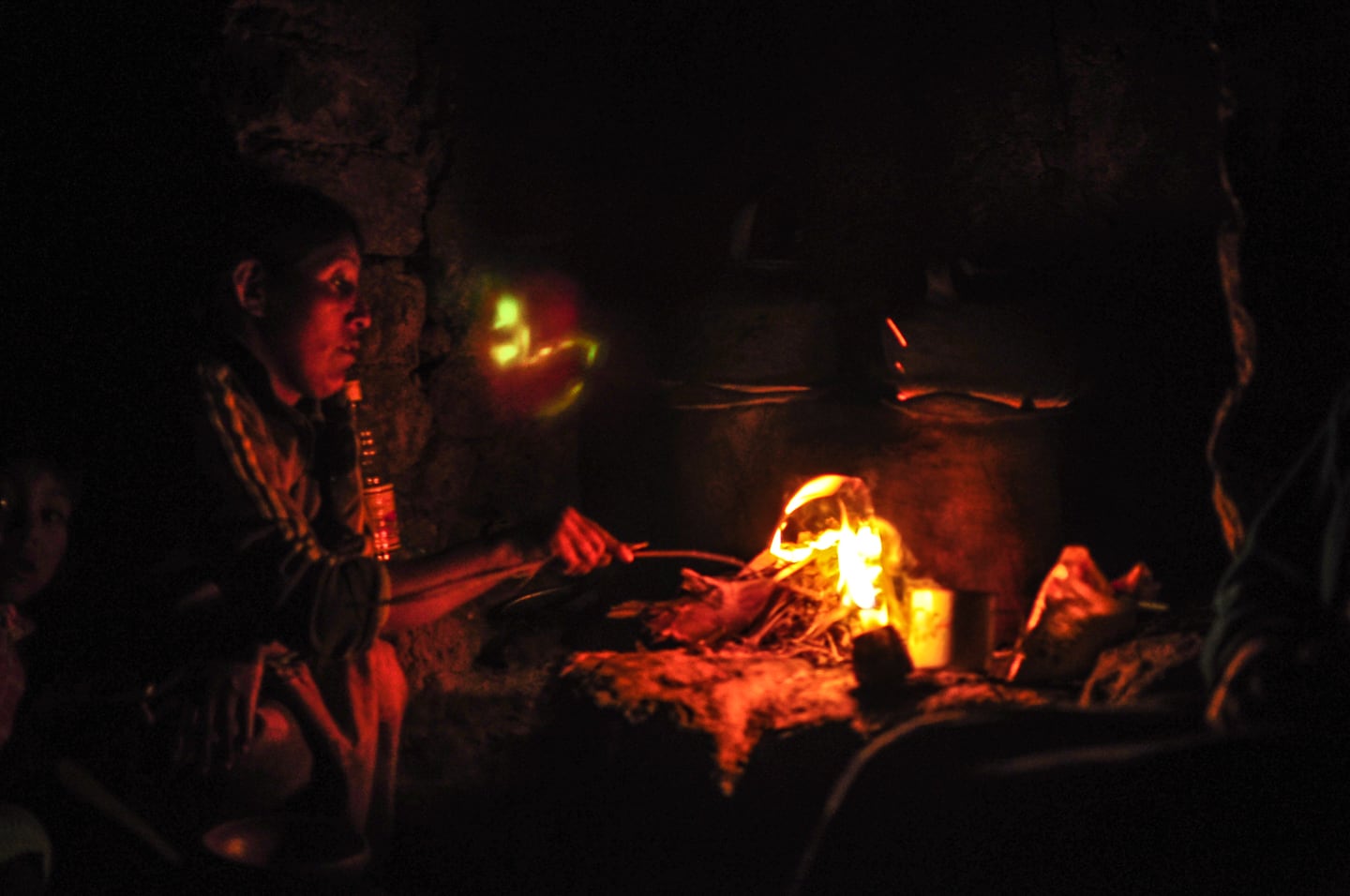Dominated by agricultural terraces and two ancient-temple-topped peaks, remote Amantaní Island is quite unlike any other island we’ve visited.
We arrived on Amantaní Island intending to stay the night before continuing on to neighboring Taquile Island the next day. The island is home to 800 Quechua-speaking families but not a single hotel or restaurant. Night time temps get down to the teens in July. Yes, this could get very interesting.
Well, in truth, we did knew that local families welcome visitors into their homes for the night and that services would be limited and basic. For us, this was all the more reason to visit.
Arriving at the island was an experience in itself. As we approached the small harbor we noticed a crowd of people lined up on the shore. As we walked off the ferry, we were asked to also form a line. A man appeared and, working in the local Quechua language, methodically paired each group of visitors with a host family. The newly formed pairings then filed silently up the stone path before dispersing towards each family’s respective home on the island, all without a word of Spanish, English, German, or Japanese exchanged the whole time.
It was apparent the residents of Isla Amantaní had done this a time or two.

Our home for the night was a twenty minute walk from the boat. The journey seemed pretty straightforward at the time, but finding the house on our own after dark would later prove a near-impossible feat.

We were hosted by Emiliana and her five children. Emiliana’s Spanish language skills were less than basic, and our Quechua was even worse, so communication was its own adventure. A couple of her older children did speak Spanish, which was helpful when they were around.
Eating was also a fun little adventure. Nothing too foreign to us—largely potatoes, local fresh cheese and soup—and all very tasty.
But, if you’re going to stay on Amantaní Island, you better like potatoes.
Potatoes for breakfast, potatoes for lunch, potatoes for dinner. Potatoes are one of the few crops grown on this island, alongside quinoa and wheat.
They were quite good potatoes–as far as potatoes go–but still a lot of potatoes. The local cheese was delicious, and the quinoa soup wasn’t bad either.

We knew beforehand that it was customary to bring along a small gift to our host family from the mainland, as it is often difficult for the residents to get many things on the island. We put together a small gift bag with some odds and ends from Puno–Lori had an idea to throw in a pack of Crayons, which were the kids’ favorite part.


Homestays aren’t always easy, and it’s difficult to do one for very long—Lori and I each have made it as long as three months living with a host family. Navigating cultural, linguistic, and socioeconomic divides can be tough work, and might not be what most people consider a “vacation.”
But if you truly want to understand a culture and place that is very different from your own—culturally, linguistically, socioeconomically—there are few better avenues for doing so than staying and/or living with local families. It’s a vastly different experience from staying in tourist/backpacker ghettos or being part of a tour group and just hitting the major sights. There’s nothing wrong with that, of course, and Lori and I certainly do our fair share of that as well.
It’s all about expectations. If you’re expecting to get any real sense of a culture or have real interactions with people in a foreign place, then tourist attractions, hotels, and comfort food probably won’t get you very far.

What appears to be a pile of rocks surrounding these women are in fact piles of potatoes—lots and lots of potatoes.

We ran into these kids selling Andean flutes on a walk around the island. Though quiet on this particular day, Amantaní Island does get its fair share of visitors in high season.

Sheep and donkeys are a common sight along the paths that criss-cross the island. There are no cars on Amantaní Island, though the town does have a generator. There is also a school and health clinic in the community.

In addition to agricultural activities, the people of Amantaní Island also craft colorful textiles and ceramics, for which they’re known.

There aren’t a lot of “sights” to visit on the island, but that’s a big part of the allure. Getting to observe and take part in the daily life activities of this traditional culture and very special place is the main draw.
With that said, climbing to the top of Pachatata (“Father Earth”) is a worthwhile activity and closest thing to a tourist sight on the island.

A winding brick and stone road leads to the top of Pachatata, the highest point on Amantani. Along the way, we pass under a variety of stone arches.

Behind us rises Pachamama (“Mother Earth”) topped by ancient ruins that date to the Tiahuanaco culture, which first inhabited the island around 500 BC. The Inca later added to the sacred structures. Entry to the temples at the tops of the peaks is generally only permitted on the annual feast day, January 20.



The climb to the top of Pachatata is a bit of a slog, but the sweeping views are well worth it.





We highly recommend heading up to the top of Pachatata at sunset–just be prepared for a drastic temperature plunge and frigid winds when the sun dips over the horizon.




As mentioned earlier, it took us quite a long time fumbling our way through the dark to find our home stay house. In addition to only having been here for a few hours, the island gets very dark after sunset–as you might imagine–and there aren’t a lot of distinctive landmarks to go off of.
Back at Emiliana’s place, we warm up around the fire in the family’s small earthen kitchen. As Emiliana prepares dinner, the children chat with us in Spanish and a bit of English.

So, we’re sitting in the dark, quietly taking in the serenity of our surroundings–the fire crackling, the children playing, the smell of potatoes boiling in a tin cup on the coals–when all of a sudden, Lori and I feel something rub up behind us. Then squeaking. “Rats!!!” we think. I jump up and shine my flashlight down on the ground. Not rats, but CUY (Andean guinnea pig), and not one, but several, scurrying along the dirt floor and squeaking all the while. There are about a dozen cuy roaming freely around their kitchen. The children find our reaction hysterical, of course. Cuy is, after all, a popular food in Peru. But tonight we’re having, you guessed it: Potatoes!
Well, potato soup, to be exact.

After dinner, we say goodnight and turn in. It’s still pretty early, but night has fallen, the generator is off, and well, there’s just not a lot to do after dinner and sunset on Amantaní Island. So, we turn in. Or at least try to. It is cold. Damn cold. We put more wool blankets on and it’s still frigid.
Hardy does not begin to describe these people.
Miraculously, we awake in the morning, take our morning trips to the latrine and sit down to enjoy a hot mug of mate and another plate full of potatoes. We grab a pic with our hospitable hosts and say goodbye.

Emiliana leads us back down the stone path and along the shore where the water taxi is waiting to take us on to Taquile Island, our next stop.

More South America Inspiration
- Baños & Ruta de las Cascadas: A Traveler’s Guide
- Cuenca, Ecuador: Why Visit + What to Expect
- Colca Canyon Trekkers Guide
- The Peruvian Amazon: Iquitos, Mazán & Indiana
- Taquile Island (Isla Taquile) on Lake Titicaca
- Amantaní Island (Peru): Our Homestay Experience
- Uros Floating Islands of Lake Titicaca in Peru
- Cuzco, Peru: Capital of the Inca Empire